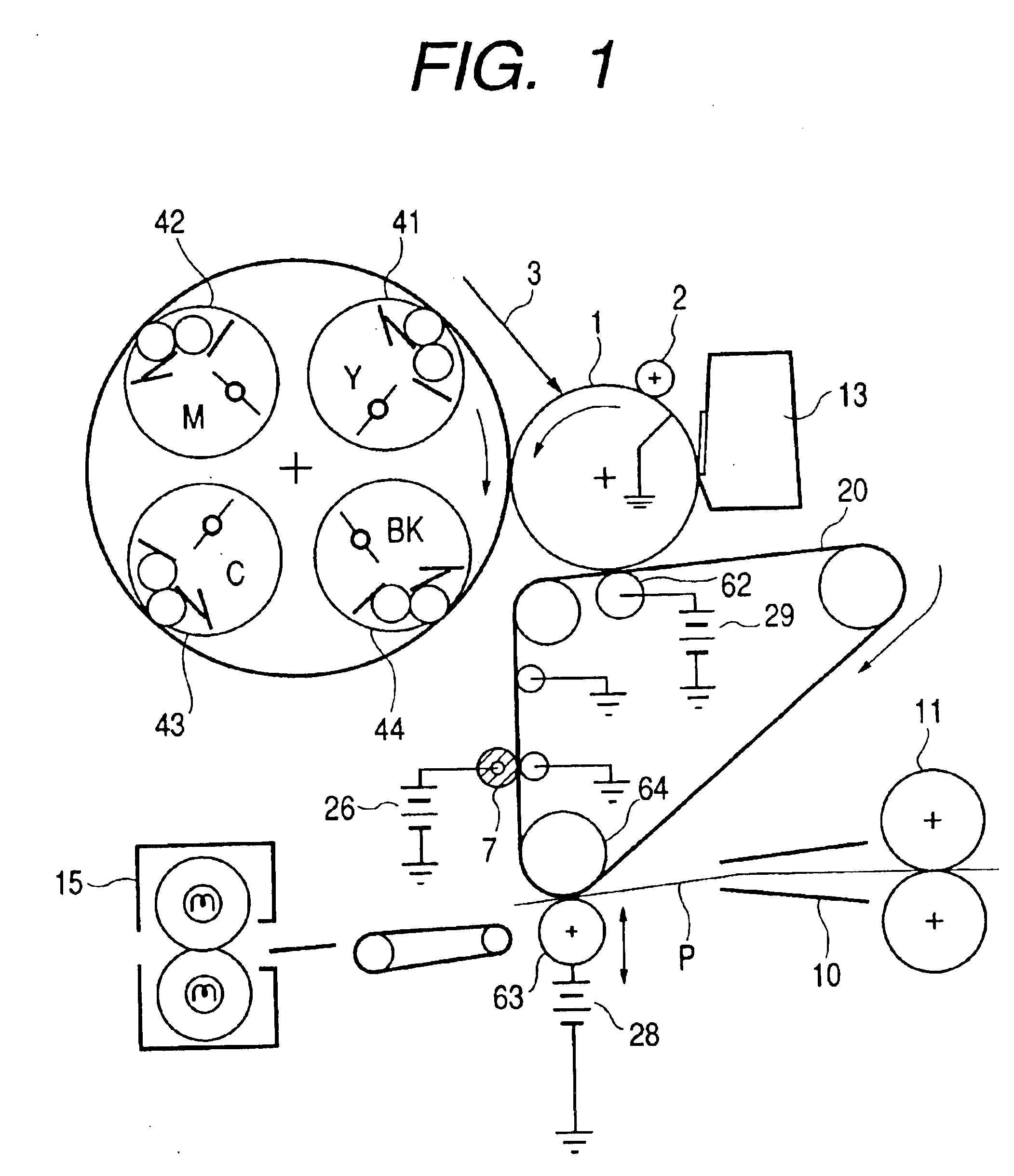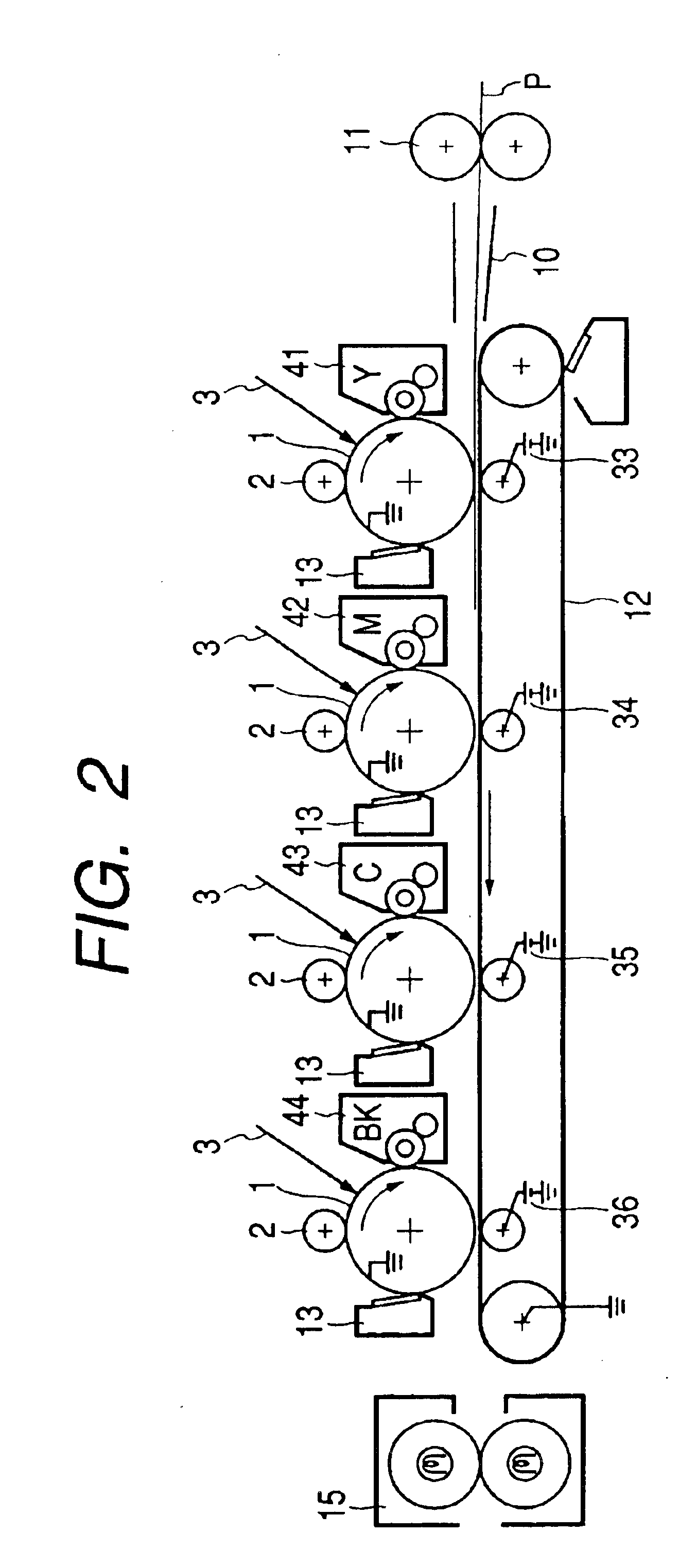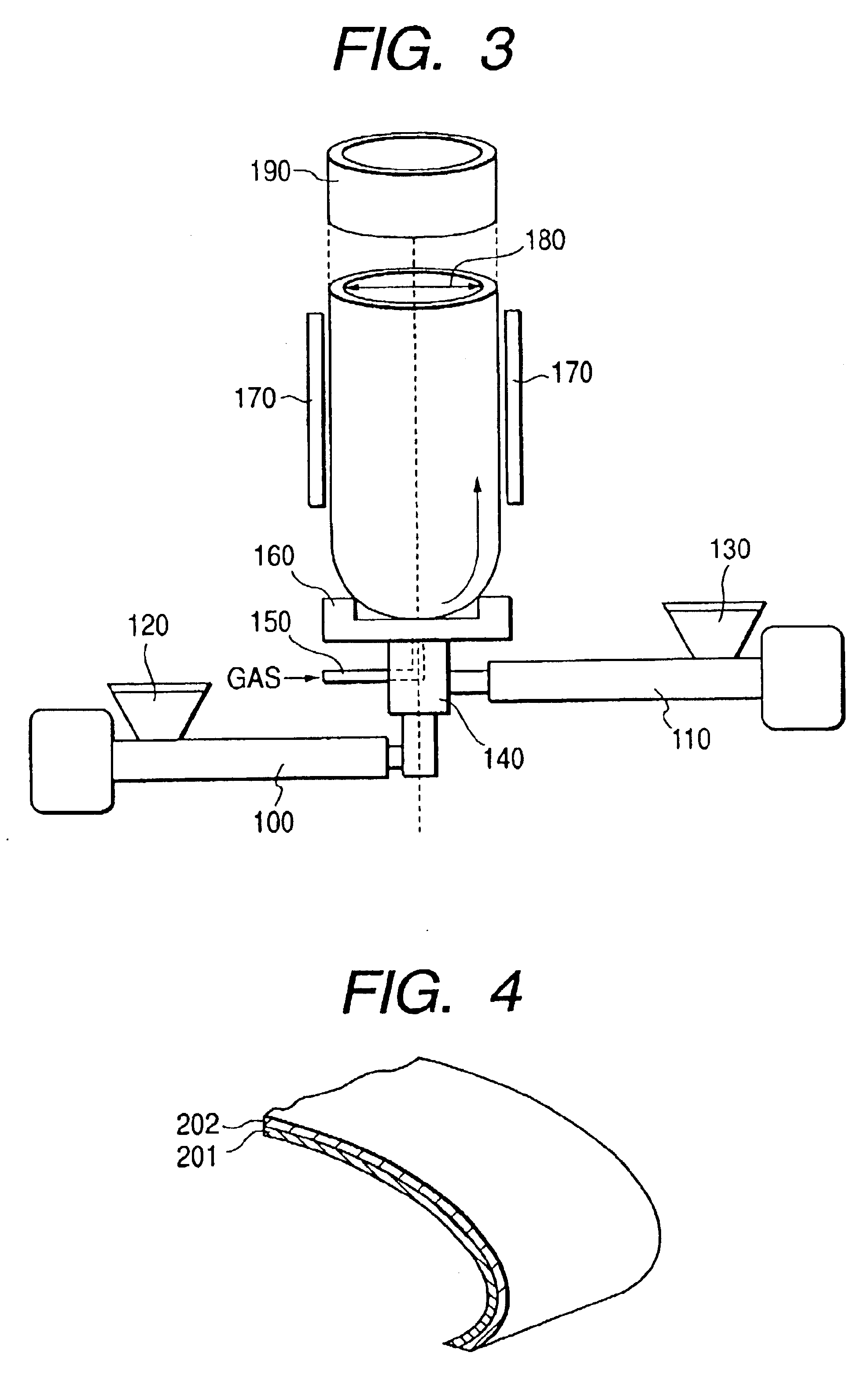Belt for electrophotography
- Summary
- Abstract
- Description
- Claims
- Application Information
AI Technical Summary
Benefits of technology
Problems solved by technology
Method used
Image
Examples
example 1
Polysulfone100 partsConductive carbon black 16 parts
The above materials were kneaded by means of a twin-screw extruder, and the additive such as carbon black was well uniformly dispersed in the binder so as to provide the desired electrical resistance, thus an extrusion material (1) was obtained in the form of pellets of about 2 mm in diameter. Next, this extrusion material (1) was put into the hopper 120 of the single-screw extruder 100 shown in FIG. 3, and was extruded with heating to form a melt. The melt was subsequently brought to the circular die 140 for extruding a cylindrical single-layer product, having a diameter of 120 mm and a die gap of 1 mm. Then, air was blown from the gas inlet passage 150 while extruding the melt from the die, to scale-up inflate the extruded product into a cylindrical extruded product of 190 mm in diameter and 160 μm in thickness as final shape dimensions 180. This product was further cut in a belt width of 320 mm to obtain a seamless endless belt ...
example 2
Polysulfone80 partsPolyether sulfone20 partsConductive carbon black16 parts
The above materials were kneaded by means of a twin-screw extruder to obtain a uniform kneaded product, which was designated as an extrusion material (2). Next, this was continuously extruded by means of the extruder shown in FIG. 7, using a circular extrusion die 141 having a diameter of 200 mm and a die gap of 1.2 mm. The cylindrical extruded product obtained was cut to obtain an intermediate transfer belt (2) of 185 mm in diameter, 320 mm in belt width and 125 μm in thickness.
The tensile break strength and breaking extension of the extrusion material (2) were 80 MPa and 6%, respectively. The electrical resistance of the intermediate transfer belt (2) under application of 100 V was 3×105 Ω.
The scattering of electrical resistance was within one figure in respect of both the surface-direction resistance and the thickness-direction resistance. The scattering of thickness was also as good as 125 μm plus-minus ...
example 3
Polyether sulfone80 partsPolybutylene terephthalate20 partsConductive carbon black15 parts
The above materials were kneaded by means of a twin-screw extruder to obtain a uniform kneaded product, which was designated as an extrusion material (3). The subsequent procedure of Example 1 was repeated to obtain an intermediate transfer belt (3) of 190 mm in diameter, 320 mm in belt width and 155 μm in thickness.
The electrical resistance of this intermediate transfer belt (3) under application of 100 V was 6×105 Ω. The scattering of electrical resistance was within one figure in respect of both the surface-direction resistance and the thickness-direction resistance. The scattering of thickness was also as good as 155 μm plus-minus 11 μm. The tensile break strength and breaking extension of the extrusion material (3) were 71 MPa and 11%, respectively.
Next, using this intermediate transfer belt (3), printing was tested in the same manner as in Example 1 to obtain good results like those in Ex...
PUM
| Property | Measurement | Unit |
|---|---|---|
| Thickness | aaaaa | aaaaa |
| Thickness | aaaaa | aaaaa |
| Electrical resistance | aaaaa | aaaaa |
Abstract
Description
Claims
Application Information
 Login to View More
Login to View More - R&D
- Intellectual Property
- Life Sciences
- Materials
- Tech Scout
- Unparalleled Data Quality
- Higher Quality Content
- 60% Fewer Hallucinations
Browse by: Latest US Patents, China's latest patents, Technical Efficacy Thesaurus, Application Domain, Technology Topic, Popular Technical Reports.
© 2025 PatSnap. All rights reserved.Legal|Privacy policy|Modern Slavery Act Transparency Statement|Sitemap|About US| Contact US: help@patsnap.com



